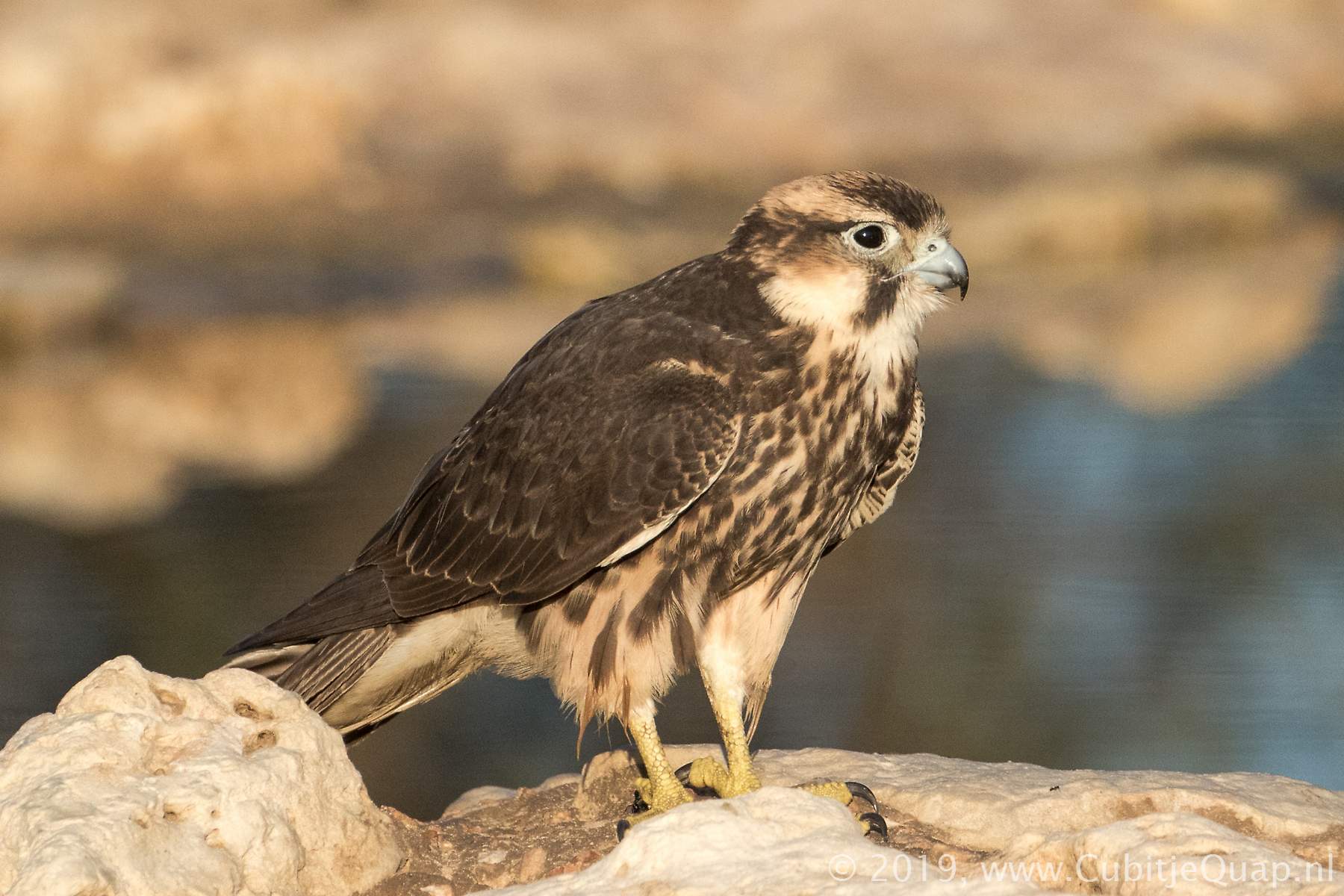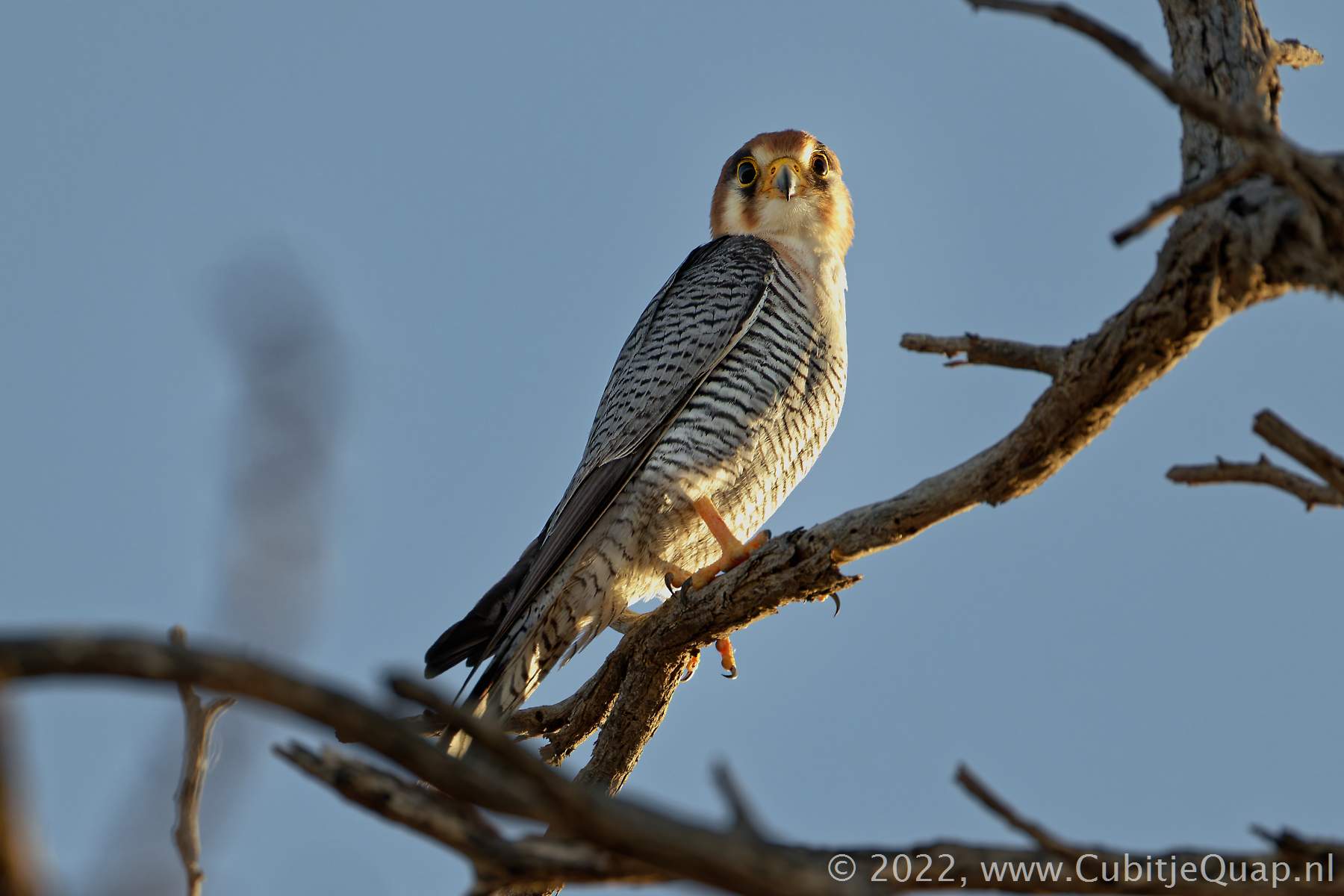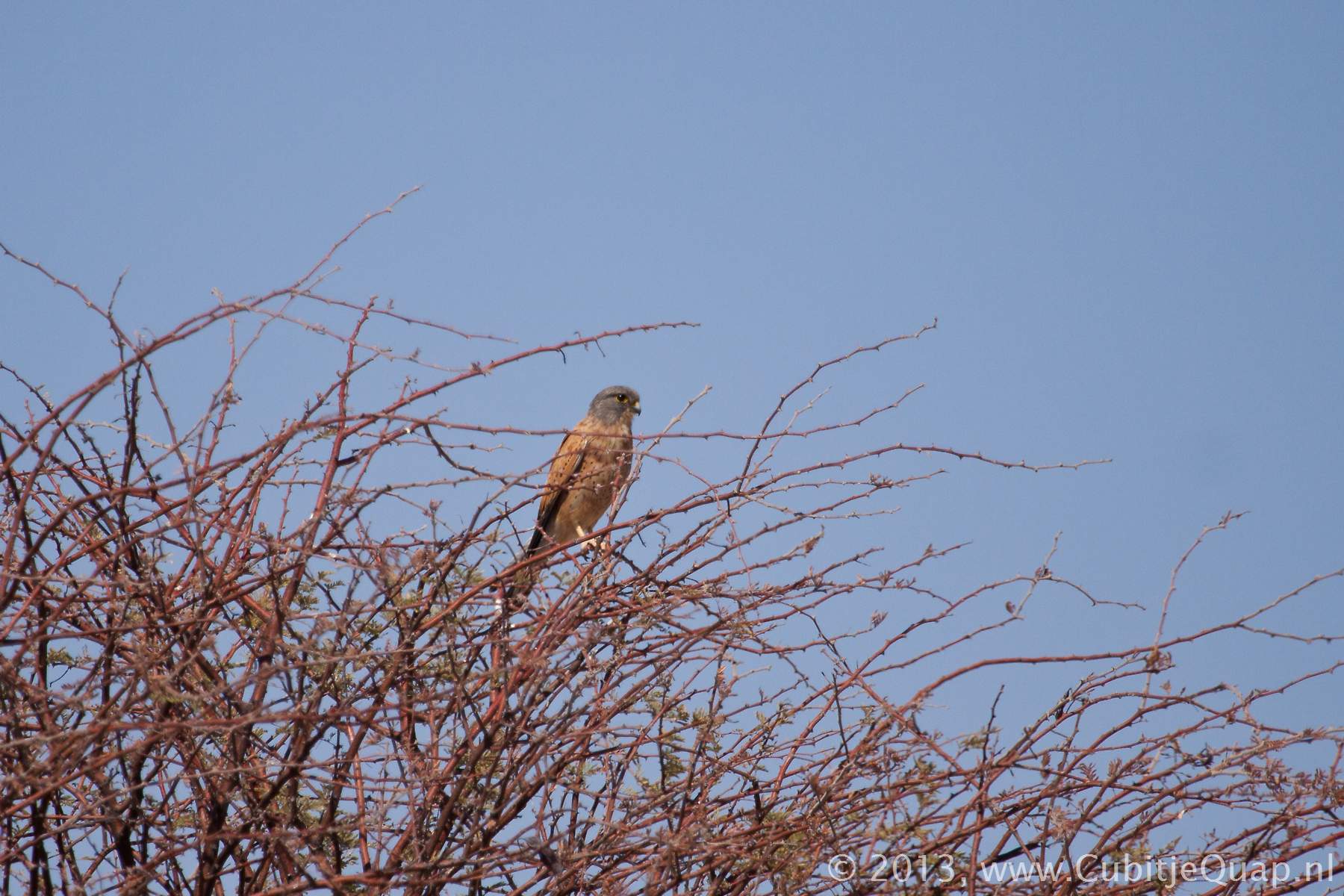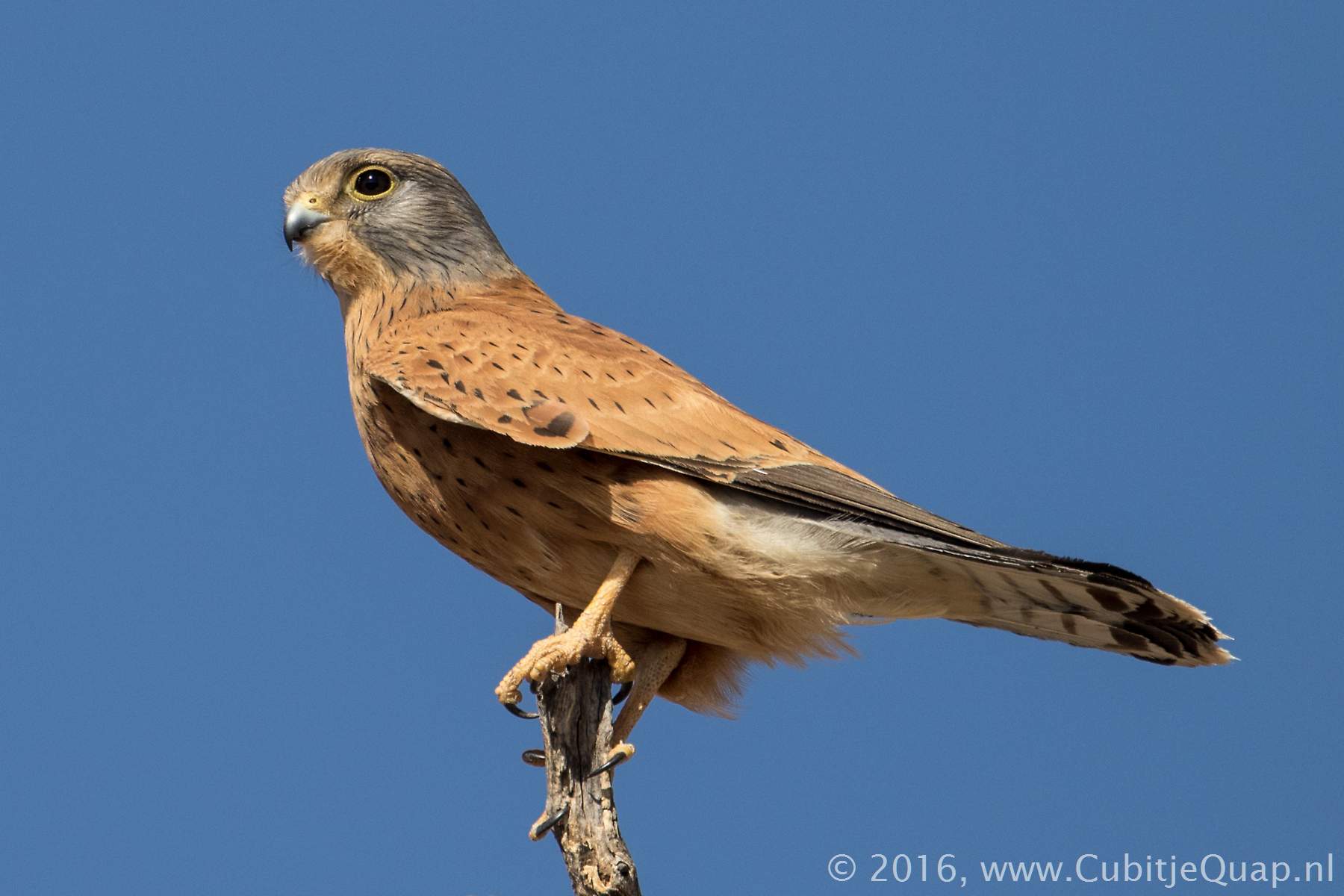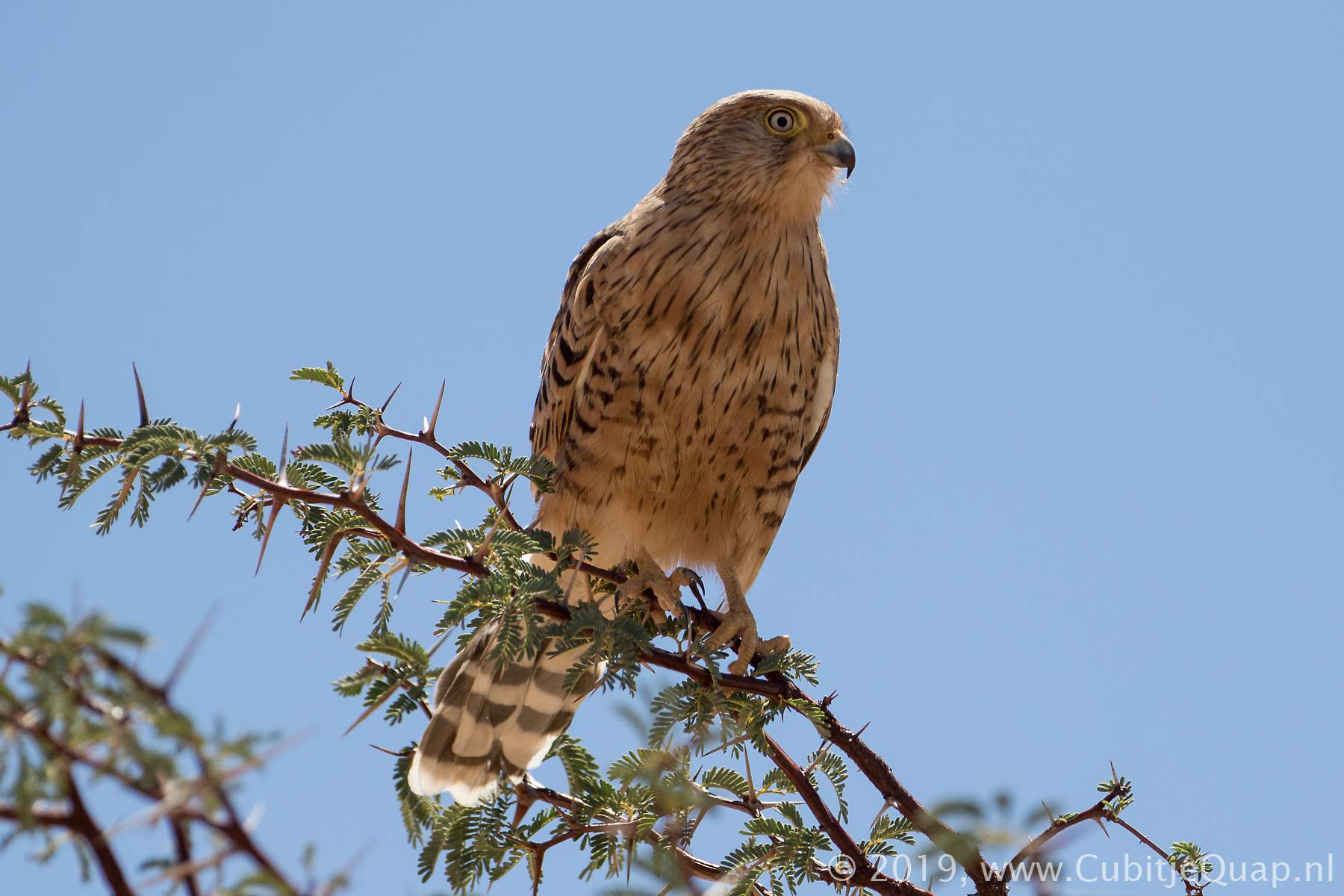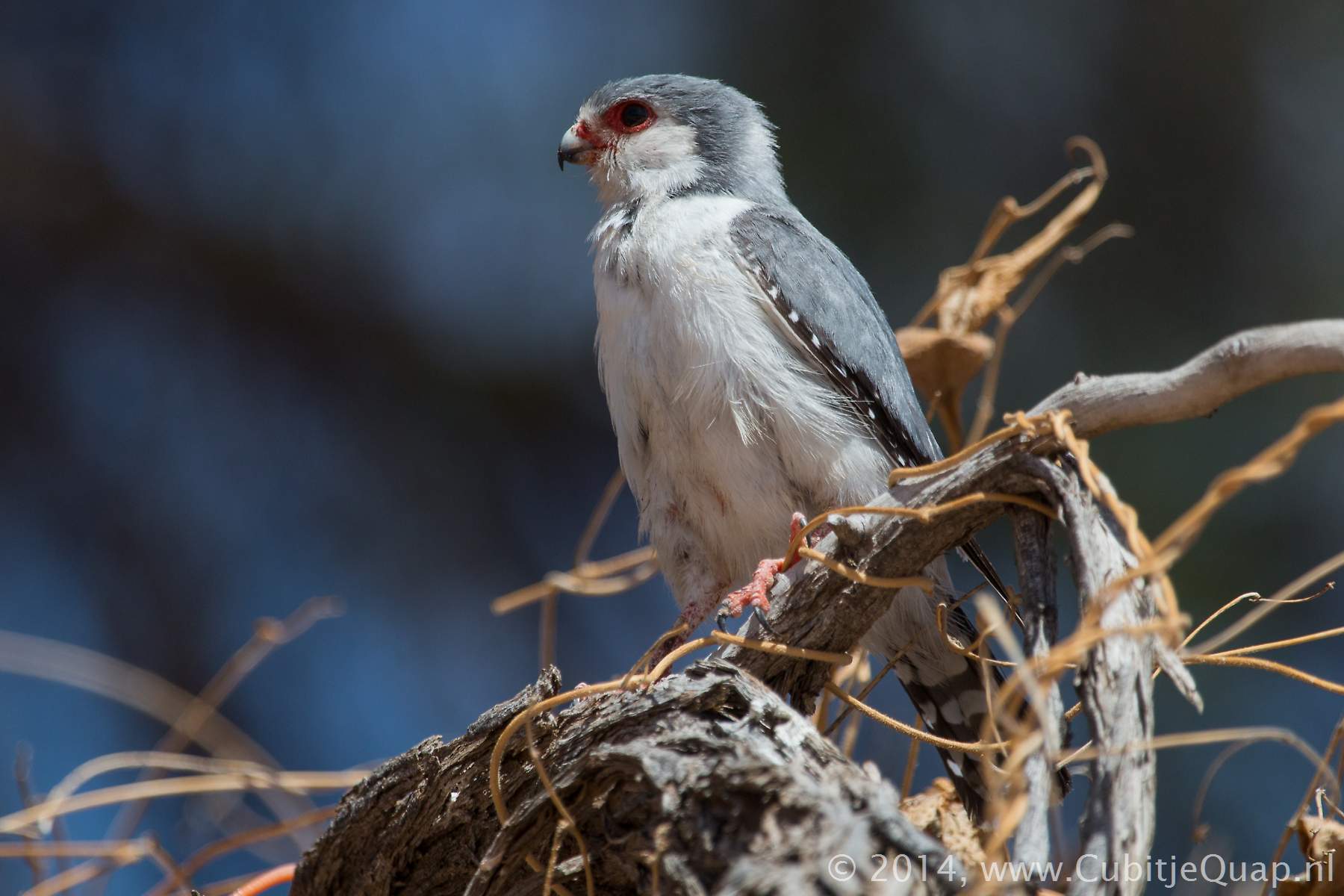Falcons and kestrels Information page
Description
Very small to medium-small sleek raptors. The females are larger than the males. They inhabit open country and they are designed for fast flight: their wings are long and pointed and their tails are long. The head is slightly pug-faced due to the powerful jaw muscles which, togerther with the characteristic notch ('tooth') in the upper jaw, are used to kill prey. Most falcon species have moustachial stripes on the cheeks.Falcons make use of fast flight to catch their prey, striking vertebrates in the air with their feet. Some are reputedly the fasetest of all birds when attacking prey in near-vertical stoops.
Kestrels take often invertebrate prey on the ground by hovering and dropping onto the prey. Unlike flacons, they will also perch-hunt.
Pygmy falcons mainly prey on reptiles, insects and rodents.
They are monogamous, they do not build their own nests, generally breeding on cliff ledges, buildings, old crow nests or similar. They usually lay 3 eggs. Incubation and feeding of the young is mostly done by the female, prey is delivered to the nest by the male.
Scientific names
Falco = falconPolihierax = pale grey hawk
biarmicus = two armed
chicquera = hunter (from Hindu)
naumanni = for Johann Friedrich Naumann (zoologist)
rupicolus = rock-dweller
rupicoloides = rock-dweller-like
semitorquatus = half collared
Birds in this category
Interesting links
Wikipediafatbirder.com

